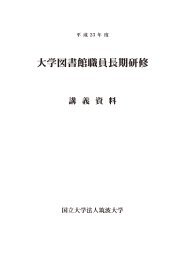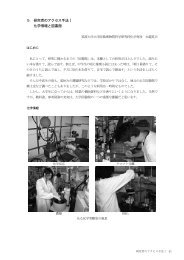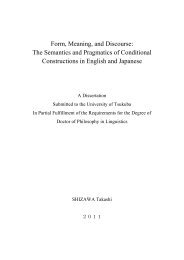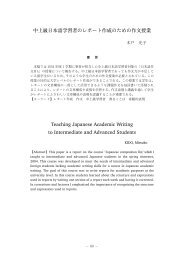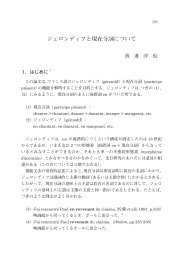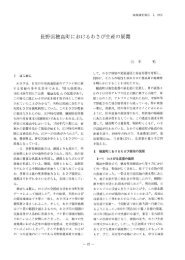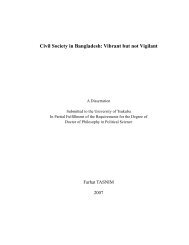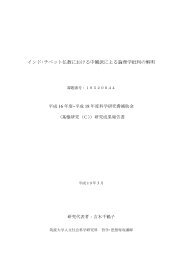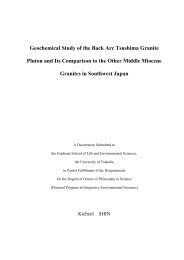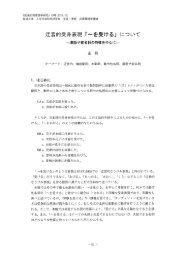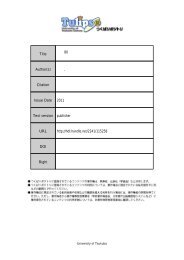Gamma Rays and CarbonIon-Beams Irradiation for Mutation ...
Gamma Rays and CarbonIon-Beams Irradiation for Mutation ...
Gamma Rays and CarbonIon-Beams Irradiation for Mutation ...
You also want an ePaper? Increase the reach of your titles
YUMPU automatically turns print PDFs into web optimized ePapers that Google loves.
generation (mother plant <strong>and</strong> sucker) showed the same characteristics, this<br />
characteristic is heritable to the subsequent generations. Un<strong>for</strong>tunately, bunch<br />
characteristics <strong>and</strong> fruit quality were not able to be compared, but future<br />
research could be conducted <strong>for</strong> leaf shape in relation to production <strong>and</strong> fruit<br />
quality. On the other h<strong>and</strong>, Carbon ion-beams irradiated plants showed<br />
hexaploids cells detected by flow cytometer (five plants in ‘C. Enano’ <strong>and</strong> one<br />
in ‘Williams’), signifying that chromosome duplication occurred.<br />
On the topic of <strong>Gamma</strong> rays irradiated plants in “<strong>Gamma</strong><br />
Greenhouse”, visible variation of the leaves such as abnormal, double, long,<br />
rudimentary, spindled <strong>and</strong> yellow spotted leaf were shown, suggesting that the<br />
effect of the long-term chronic irradiation acted directly in the active cell<br />
division at meristem level, resulting in severe damage or even death of the<br />
meristems.<br />
A screening method using juglone toxin was adapted using the leaf<br />
disc from young banana irradiated plantlets. Leaf disc necrotic area (LDNA-<br />
%) was determined selecting the less affected plants <strong>for</strong>m the irradiated<br />
population (<strong>Gamma</strong> rays). Twenty plants were selected from the ‘Orito’ lot,<br />
eight in ‘Williams’ <strong>and</strong> five in ‘Cavendish Enano’.<br />
Applying a lineal regression to the combinations of the disease<br />
development period (DDP-days), infection index (II-%) <strong>and</strong> LDNA-% on<br />
plants from ion beam experiment, six plants of ‘Williams’ (code number: ‘W<br />
16 II 74’, ‘W 128 I 67’, ‘W 1 II 148’, ‘W 8 II 13’, ‘W 1 II 19’ <strong>and</strong> ‘W 1 II<br />
31’) <strong>and</strong> two plants of ‘Cavendish Enano’ (code numbers: ‘CE 4 II 30’ <strong>and</strong><br />
‘CE 64 I 5’) were selected as possible c<strong>and</strong>idates with better response against<br />
to black Sigatoka.<br />
133



